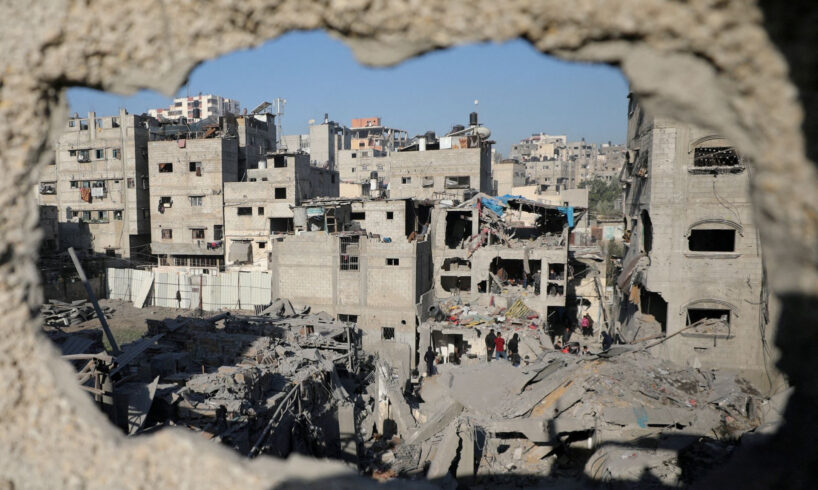
Shafaq News
The Gaza war
of 2023 did not begin on October 7. It began in the camps of 1948, in the
curfews of 1967, and in the checkpoints that split families into two.
Hamas’s
assault pierced Israel’s sense of security; Israel’s response erased entire
neighborhoods, burying children under the ruins of homes built by refugees from
an older war. The world called for calm — the same word it used each time
before.
In Gaza,
silence is only the space between explosions. Hospitals run on empty tanks;
families live on rationed bread and water. The displaced pitch tents on the
same sand where their grandparents once fled. Each war resumes the last, and
each truce expires before it begins.
The Paper
That Divided the Land (1917–1948)
The first
shot was ink. In 1917, Britain’s Balfour Declaration promised a “national home
for the Jewish people” in Palestine without consulting its Arab majority. The
League of Nations, the United Nations’ predecessor, turned that line into law,
tasking Britain to foster Jewish immigration while “protecting” native rights —
two missions that could not coexist.
As Europe
descended into fascism, Jewish refugees arrived in waves, buying land from
absentee landlords. Peasants became trespassers in their own fields. By the
1930s, revolt spread, but Britain crushed it and jailed its leaders.
Then came
1947, and the UN voted to partition Palestine. Jews, one-third of the
population, were granted more than half the land. The Jewish Agency accepted;
Arab leaders refused. Violence followed.
On May 14,
1948, Israel declared statehood. The next day, Arab armies invaded. By year’s
end, the borders and the balance were gone.
The Nakba:
When Home Became Memory (1948–1967)
For
Palestinians, 1948 was less a war than an erasure. Three-quarters of a million
people were expelled or fled. Over 400 villages vanished. UN Resolution 194
affirmed their right to return, yet it was never enforced.
The refugees
built lives from canvas and ration cards. “Temporary camps” hardened into
permanent cities of loss. Under Jordanian and Egyptian control, Palestinians
lived without a state, their identity defined by what they had lost.
Out of that
void, the Palestine Liberation Organization (PLO) was born in 1964 — a
government without territory, representing a people without borders. Three
years later, the last fragments of their land were occupied again.
Occupation:
Control Without End (1967–1993)
Israel’s
six-day victory in 1967 placed all of Palestine under its control. UN
Resolution 242 demanded withdrawal from occupied lands; none followed.
Israel built
settlements across the West Bank and Gaza. In 1979, the UN declared them
illegal, but expansion continued. Life under occupation meant permits, curfews,
and military courts.
In 1987, the
First Intifada erupted — a generation of youth confronting soldiers with stones
and slogans. The uprising, televised and relentless, forced both sides to the
table after decades of silence.
The Mirage
of Peace (1993–2000)
Oslo
promised statehood. It delivered administration. The 1993 accords created the
Palestinian Authority and the illusion of progress: Flags were raised, but
borders stayed closed, settlements doubled, and movement remained under Israeli
control.
By 2000,
peace collapsed at Camp David. Ariel Sharon’s visit to Al-Aqsa Mosque triggered
the Second Intifada. Hope turned to smoke.
Walls and
Blockades (2000–2023)
The Second
Intifada killed more than 4,000 Palestinians and 1,000 Israelis. Israel
reoccupied West Bank cities and built a barrier through Palestinian land. In
2004, the International Court of Justice ruled it illegal. It still stands.
Israel
withdrew from Gaza in 2005. Two years later, Hamas seized control; Israel and
Egypt sealed the borders. The Red Cross called the blockade collective
punishment.
Three wars
followed — 2008, 2012, 2014 — each ending in rubble. By the 2020s, more than
620,000 settlers lived beyond the Green Line. The two-state solution survived
only on paper.
The Fire of
2023 (2023–2025)
On October
7, 2023, Hamas launched a coordinated assault, killing about 1,200 Israelis and
taking hostages. Israel declared war.
Bombardment
flattened entire districts. A total siege cut off water, food, and fuel. By
October 2025, the Health Ministry in the strip reported about 70,000
Palestinians killed and nearly all of Gaza’s population displaced. The UN
called it “a graveyard for children.”
The
International Criminal Court issued warrants for leaders from all sides over
alleged war crimes. In 2025, talks in Egypt focused on rebuilding ruins, not
resolving causes.
The
Constant: Endurance
Across a
century of promises — Balfour, Oslo, normalization — the outcome remains the
same: Palestinians under occupation, Israelis paranoid, and the world calling
for restraint while nothing changes.
Each
generation inherits a single truth: justice deferred becomes survival.
Palestinians
endure through memory; Israel endures through might. Between them lies the
silence of the international community — a silence measured in decades.
History in
Palestine does not repeat itself – it refuses to end.
Written and
edited by Shafaq News staff.





